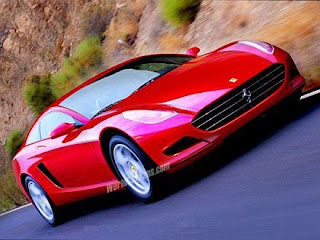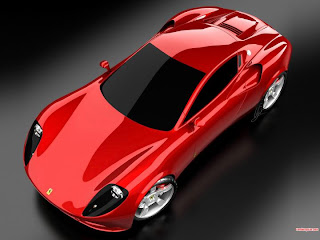|
|
|---|
Friday, February 26, 2010
No Wonder They Beat The U.S. Team!
Actually, the medal ceremony for women's hockey was very nice, as the mostly Canadian crowd changed USA! USA! after the American team was awarded the silver medal. It was generous, considering that the Canadians had been beaten in men's hockey by the U.S.
Thursday, February 25, 2010
In Defense of ETC Part 2; Professor Gilbert's Test
Gilbert's testing discovered a hole in Toyota's diagnostics for their ETC system. To fool the system, he had to induce a highly unlikely failure. Toyota's system uses two pedal position sensors, which are separated by several centimeters, which have signal wires coming out on a common harness. Gilbert shorted the signal wires of the two sensors together through a resistor. By carefully choosing the resistor, he was able to find a short combination which the Toyota diagnostics did not detect. However, a short alone was not enough to cause unintended acceleration. To do that, Gilbert had to take the shorted wires, and then add another connection, to the power wire on the harness. When both sensor signal lines were shorted to the power line, then the throttle opened because the large voltage was interpreted as a command from the pedal. Because the two signals were within range of one another, the diagnostics didn't find it.
To induce this purely electronic unintended acceleration event, Gilbert had to induce two faults into the system. In the business, this is called a multi-point failure. It is similar to saying, "what if your gas tank was leaking and your wheel fell off, creating sparks". Because the sensors are separated in the throttle pedal housing, the only feasible way for this failure to occur, in my opinion, is for the wiring harness to be cut or frayed such that the signal wires are exposed, and electrically shorted, but not cut through.
Toyota hired respected engineering consulting house Exponent to do an outside check of their ETC fault robustness. The full report is here. Exponent bought several different Toyota vehicles, spliced into the ETC wiring harness, and inserted various types of faults, using engineering data provided by Toyota. All of the faults that Exponent inserted were quickly detected by Toyota's system. The difference in methodology from Gilbert's testing was that Exponent limited their faults to the more likely type, single-point failures, where a single wire or signal was compromised.
In short, Gilbert proved that by manipulating the system just so, he could break it. But his failure mode is not something that is remotely likely to occur in the real world. Gilbert produced what Safety Research Strategies, ABC News, and some congress members wanted: a dramatic demonstration. But he didn't find a smoking gun.
Wednesday, February 24, 2010
Rep Burton: "Why are the pedals different?"
Toyoda: "Customer misuse is a factor"
Toyota ETC Videos
Link
In Defense of ETC Part 1
For now, I'd like to take a few lines to defend ETC in concept.
ETC has some significant advantages over mechanical throttle linkages.
- Fuel economy: actual throttle flow can be optimized based on operating conditions, and pedal position is used to infer driver intent. For example, someone with a shaky foot can be "smoothed out".
- Mechanical simplicity, weight, and cost: Using ETC means you can get rid of the idle air control valve, throttle cable, and cruise control actuator. Fewer things to break.
- Robustness: ETC systems have built in algorithms for unusual conditions. For example, the throttle plate can be shaken very quickly by the motor, as an "ice breaker", if the throttle plate is iced. There are no cables to bind up or corrode, no exposed return springs to break. The system has independent CPUs which monitor the throttle plate position and pedal position 100s of times a second, with fail-safe algorithms to shut the thing down if something unexpected happens. ETC has redundant sensors, which are used to check that the information coming into the ECUs is reliable and self-consistent. In a mechanical throttle system, the only failsafe is the driver's foot--if the thing is stuck, you pump it and pray it gets unstuck.
Trial lawyers try to sow FUD (Fear, Uncertainty, Doubt) about "complex electronic systems", and throw out scary "what if" scenarios, to try to win cases and big money. But engineers know that complex systems are designed, tested, and validated over many years before being released into production, and are tested for every conceivable failure. ETC systems must be qualified under a range of temperatures and wide band electromagnetic interference testing. Failure modes, such as cut wires, broken sensors, damaged actuators, etc. are all tested using a process called FMEA (failure mode effects analysis). FMEA was designed by NASA as a way to think through a system's reliabilty to pin down possible ways it could break; then tests are designed to validate the system under those conditions.
Is it possible that Toyota screwed up the FMEA, or cut corners, and has a dangerous-but-rare condition with their ETC system? It is possible. But given the excellence of Toyota's engineering, I would be surprised.
Tuesday, February 23, 2010
Toyota's Lentz Weeps
Why Stuck Throttles Are So Dangerous: Loss Of Vacuum
The reason that you only have one chance to brake a car which is experiencing a stuck throttle or unintended acceleration is that at wide-open-throttle, the engine is not generating any manifold vacuum. Without manifold vacuum, on most cars, the hydraulic brake booster will ingest air as the brakes are applied. Pumping the brakes will fill the booster very quickly. Without vacuum, the brake pedal will be very hard, and it will require a huge amount of brake pedal force to stop the car.
Rep. Buyer Defends Toyota
Toyota: Gilbert's Test "Sabotage"
Gilbert: Toyota Electronic Throttle Diagnostics Poor
"If I would have done that on a Buick or a Honda... it would have set a DTC or code".
Monday, February 22, 2010
Texting While Driving = Death
See it for yourself here.
Canada Beating US at Olympics! (Per Capita)
There is a lot chatter and ink flying about how the U.S. is beating Canada in the winter Olympics medal count.
But not really.
Canada is outplaying us if you normalize the data. Who cares about total medal counts? Better measures are in residents/medal and GPD/medal.
Let's compare some countries using Wikipedia's demographic information and current medal count:
U.S.A: 310,000,000 people, GDP $14,400,000,000,000, 24 medals, 7.7E-8 Medals/Resident, 1.6E-12 Medals/$ GDP
Germany: 80,000,000 people, GDP $2,900,000,000,000, 18 medals, 2.3E-7 Medals/Resident, 6.2E-12 Medals/$ GDP
Norway: 4,800,000 people, GDP $257,000,000,000, 12 medals, 2.5E-6 Medals/Resident, 4.7E-11 Medals/$GDP
Canada: 34,000,000 people, GDP $1,300,000,000,000, 9 medals, 2.6E-7 Medals/Resident, 6.9E-12 Medals/$GDP
Slovenia: 2,050,000 people, GDP $54,600,000,000, 3 medals, 1.5E-6 Medals/Resident, 5.5E-11 Medals/$GDP
Per capita and per $ GPD, Canada is clearing beating the U.S. They are winning about 3.4x the number of medals per resident, and 4.3x the number of medals per $ of GDP.
But Norway is really cleaning up. It is winning medals at a rate 32x the U.S., per capita, and 30x the U.S. rate per $ of GDP.
Friday, February 19, 2010
Future Collectible Cars
My answer: something like a Mustang GT, or Chevrolet Camaro, or Dodge Challenger, running a V8. Even a Pontiac G8.
Because when NHTSA, EPA, and CARB's CO2 and fuel economy regulations kick in full bore, only rich guys will be able to afford a good fashioned American V8. Naturally aspirated, big displacement, big torque.
Wednesday, February 17, 2010
Hosted2Standard Upgrade Campaign Launched
Tired of the winter and eager to change things for the better? The time for transformation has come! WorksForWeb announces Limited time offer for all Hosted Edition owners of iAuto auto classified script: “Hosted2Standard Upgrade”.
Get more details about the Hosted2Standard Upgrade Campaign at WorksForWeb official website.
Don't let this once-in-a-lifetime opportunity pass you by!
Tuesday, February 16, 2010
MINI E at 20,000 miles
Apparently oblivious to the claims that EVs can't tackle the sort of driving that a normal, combustion-engined car can, driver Tom Moloughney, a restaurant owner, averages over 130 miles per day seven days a week. Charging with MINI's 220-volt charging stations takes around 3.5 hours which is apparently proving perfect as the car can be left to charge whilst Tom is working, and charged again when he gets home.
After 21,000 miles the car is costing around 3c a mile to run (total charging cost has been $650 so far) and Tom expects to make 35,000 miles by the end of the year's lease.
(Image: MINI)
Edit: 7 March 2009 - Tom has his own blog - you can follow his progress trialling the MINI E at http://minie250.blogspot.com/
Facelifted Elise - lower drag, new engine
The car is expected to start arriving in showrooms in April.
(Image: Autocar)
Sunday, February 14, 2010
Geocache Challenge Update: WINNER!
Friday, February 12, 2010
Geocache Challenge Update 3: Corrected
The new (and hopefully correct) GPS location of the prize is N42*33.547, W83*12.596
Also, more hints about where it is:
Follow the right side of the field, to where you can see the power transformer.
Follow the path until it comes to a "T".
The prize is hidden behind a large fallen log about 20" off of the trail from the "T".
New VW Touareg sheds 200kg
The weight saving amounts to as much as 10% removed from the kerb weight of the previous Touareg, and coupled with improved aerodynamics and updated engines, including a new hybrid motor, the new Touareg promises to be one of the most efficient large SUVs on the market.
Of course, the weight savings on the Touareg will be reflected in the upcoming Audi Q7 and Porsche Cayenne, which share the same platform. Perhaps Volkswagen's step onto the treadmill will encourage other manufactures to do the same with their larger vehicles - the biggest gains can be found from improving the efficiency of the biggest vehicles.
(Image: Volkswagen)
Shooting Down Mosquitos

Thursday, February 11, 2010
Geocache Challenge Update
Here's a hint: the cache is within a 15' radius of the T shaped intersection which forms the last waypoint. It isn't buried, but it is not in "plain view" from the trail.
Monday, February 8, 2010
The True Danica
If somehow, inexplicably, you do win tomorrow, promise us that you'll moon the other racers and scream, "Suck it, losers!"
(Laughs.) I think it'd be really funny if I started winning all the time and became really annoyingly girly and put on lipstick before every race and started wearing heels and stuff like that. I probably can't back any of this up, because I'd feel really uncomfortable and self-conscious and I'd never follow through. But it's a funny idea.
I like her more after reading the interview... her whole bikini-girl-racer image, and the stupid dot com commercials she is doing make her seem very superficial. The interview shows a much more interesting person.Subaru CVT
Really, the only way to sanely drive the Legacy Limited is with the paddle shifters. If you don't use them and leave the car in automatic mode, it's confusing and uncomfortable.
When you launch the vehicle, its revs tend to jump and then stay too high. Because the shift points are gone, something feels off -- though the Legacy is performing exactly the way it was designed. The CVT searches for the most efficient engine speed to produce the power it needs -- this is one of the reasons CVTs provide better gas mileage.
Paddle shifters, faux shift points, on a CVT?
It's Subaru's attempt to make customers feel at home. But it's silly. Instead of trying to fool you into thinking you are driving an automated manual gearbox, automakers should take the time to educate consumers about the benefits of CVTs. And if the unit whines, or the engine revs high longer than people are used to, perhaps what is needed is better noise management. Once people get used to the idea of CVTs, they won't be annoyed at their feel.
Personally, I'm a bigger fan of the dual clutch automated manual designs. They have very good efficiency, and avoid some of the serviceability questions of CVTs. And they can have "real" paddle shifters.
Sunday, February 7, 2010
Amazing design Ferrari Dino concept car
Amazing design Ferrari Dino concept car
The AutoProphet GeoCache Challenge, Week 2
The coordinates are listed in the original post, here.
New Carlsson 2010 - C25 Super GT Modification Concept
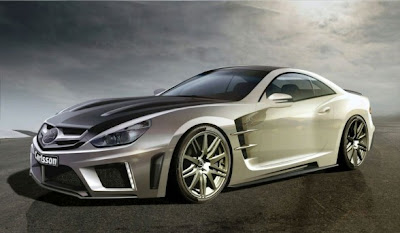 Carlsson presents an own developed automobile at this year’s Geneva Motor Show – the Carlsson C25 Limited Super-GT. The concept of this Super-GT is based on the vision of combining maximum driving performance with an entirely new design and high exclusiveness. The result is a breathtaking and beautiful sports coupé with 753 hp in a limited edition of only 25 cars world-wide.
Carlsson presents an own developed automobile at this year’s Geneva Motor Show – the Carlsson C25 Limited Super-GT. The concept of this Super-GT is based on the vision of combining maximum driving performance with an entirely new design and high exclusiveness. The result is a breathtaking and beautiful sports coupé with 753 hp in a limited edition of only 25 cars world-wide.The performance data of the six litre V12 Bi-Turbo is impressive. The high-performance aggregate with a motor management optimisation patented by Carlsson renders 753 hp (554 kW) and allows fast acceleration as well as smooth travels at lower speeds. Also responsible for the perfect performance evolvement is the elaborately developed stainless steel exhaust system with ends in four edgy pipes at the back. The power catapults the C25 with a torque of 1320 Newton metres at 3750 r.p.m. which is electronically limited to 1,150 Newton metres from 0 to 100 km/h in only 3.7 seconds and achieves a maximum speed of 352 km/h.
 The Carlsson C25 Super-GT Concept also comes with an ultra-light and forged wheels 1/10 UL in the dimensions 9,5×20 and 12×20 inches have been especially designed for the C25 and are equipped with high performance tyres measuring 265/30 at the front and 325/25 at the rear live axle.
The Carlsson C25 Super-GT Concept also comes with an ultra-light and forged wheels 1/10 UL in the dimensions 9,5×20 and 12×20 inches have been especially designed for the C25 and are equipped with high performance tyres measuring 265/30 at the front and 325/25 at the rear live axle.
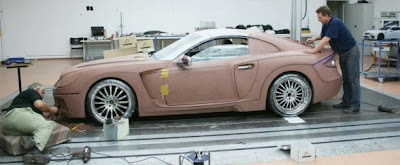
New Carlsson 2010 - C25 Super GT Modification Concept
 Carlsson presents an own developed automobile at this year’s Geneva Motor Show – the Carlsson C25 Limited Super-GT. The concept of this Super-GT is based on the vision of combining maximum driving performance with an entirely new design and high exclusiveness. The result is a breathtaking and beautiful sports coupé with 753 hp in a limited edition of only 25 cars world-wide.
Carlsson presents an own developed automobile at this year’s Geneva Motor Show – the Carlsson C25 Limited Super-GT. The concept of this Super-GT is based on the vision of combining maximum driving performance with an entirely new design and high exclusiveness. The result is a breathtaking and beautiful sports coupé with 753 hp in a limited edition of only 25 cars world-wide.The performance data of the six litre V12 Bi-Turbo is impressive. The high-performance aggregate with a motor management optimisation patented by Carlsson renders 753 hp (554 kW) and allows fast acceleration as well as smooth travels at lower speeds. Also responsible for the perfect performance evolvement is the elaborately developed stainless steel exhaust system with ends in four edgy pipes at the back. The power catapults the C25 with a torque of 1320 Newton metres at 3750 r.p.m. which is electronically limited to 1,150 Newton metres from 0 to 100 km/h in only 3.7 seconds and achieves a maximum speed of 352 km/h.
 The Carlsson C25 Super-GT Concept also comes with an ultra-light and forged wheels 1/10 UL in the dimensions 9,5×20 and 12×20 inches have been especially designed for the C25 and are equipped with high performance tyres measuring 265/30 at the front and 325/25 at the rear live axle.
The Carlsson C25 Super-GT Concept also comes with an ultra-light and forged wheels 1/10 UL in the dimensions 9,5×20 and 12×20 inches have been especially designed for the C25 and are equipped with high performance tyres measuring 265/30 at the front and 325/25 at the rear live axle.

Saturday, February 6, 2010
Toyota FT-HS Car Concept Gallery
This Concept car carry futuristic design both exterior and interior design
This car pictures is still in concept, no detail specification yet. The original source of this car is at Car Gallery, the Original post is Toyota FT-HS Car Concept
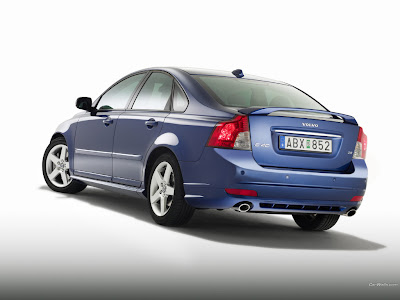


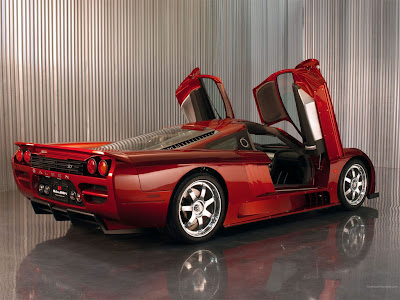
Friday, February 5, 2010
The New Toyota Auris 2010 with Full All The Details
 The new Toyota Auris HYBRID 2010 engine range features a choice of three petrol and three diesel units offering the performance- and economy-enhancing benefits of Toyota Optimal Drive. Complemented by the Auris HSD’s full hybrid technology, this unique line-up will offer customers the most comprehensive range of powertrains in the C segment.
The new Toyota Auris HYBRID 2010 engine range features a choice of three petrol and three diesel units offering the performance- and economy-enhancing benefits of Toyota Optimal Drive. Complemented by the Auris HSD’s full hybrid technology, this unique line-up will offer customers the most comprehensive range of powertrains in the C segment.While Toyota's European press department gave us only a pair of photos and no details whatsoever on the revised 2010 Auris pointing towards the Geneva Show for more information, the Japanese firm's UK arm announced the launch of facelifted model releasing pricing as well specifications.
 Furthermore, Toyota revealed that the sales of the British-built full hybrid Auris HSD that shares its gasoline-electric drivetrain with the Prius Hybrid will commence in July. We expect to see the production version of the Auris HSD making its world premiere at the Geneva Show in March.
Furthermore, Toyota revealed that the sales of the British-built full hybrid Auris HSD that shares its gasoline-electric drivetrain with the Prius Hybrid will commence in July. We expect to see the production version of the Auris HSD making its world premiere at the Geneva Show in March.Toyota wants us to believe that Auris has been fully restyled on the outside, but fact is, we doubt that your average buyer will even notice the changes.

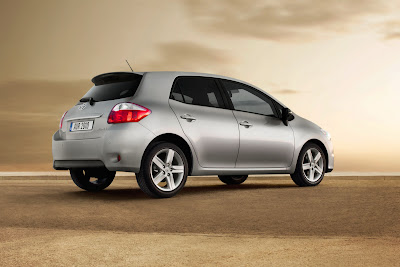 These include a new deep front bumper, reshaped headlamps, revised grille and bonnet profile with stronger crease lines plus newly styled 16- and 17-inch alloy wheels.
These include a new deep front bumper, reshaped headlamps, revised grille and bonnet profile with stronger crease lines plus newly styled 16- and 17-inch alloy wheels.The revised tail lamp clusters, the new rear bumper with extended corner sections and the integrated turn indicators on the door mirrors complete the exterior makeover.
Inside, Toyota said (but did not show) that a soft-touch material has been introduced across the top of the instrument binnacle and around the glovebox, while the centre console has been revised with changes to the instrument design.
The new white illumination for the Optitron instrument dials and the new cloth upholstery designs round off the interior updates.
Toyota added that the it has also fine-tuned the Auris' suspension and steering systems to improve driver feedback and handling.

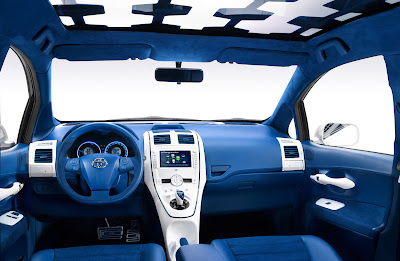 With the exception of the Auris HSD (Hybrid Synergy Drive) that will go on sale in July, the are no changes to the rest of the engine range that comprises a 1.33-litre petrol engine with Toyota Stop & Start technology, a 1.6 Valvematic petrol with manual or MultiMode transmission and 1.4 D-4D diesel, again with manual gearbox or Multimode.
With the exception of the Auris HSD (Hybrid Synergy Drive) that will go on sale in July, the are no changes to the rest of the engine range that comprises a 1.33-litre petrol engine with Toyota Stop & Start technology, a 1.6 Valvematic petrol with manual or MultiMode transmission and 1.4 D-4D diesel, again with manual gearbox or Multimode.
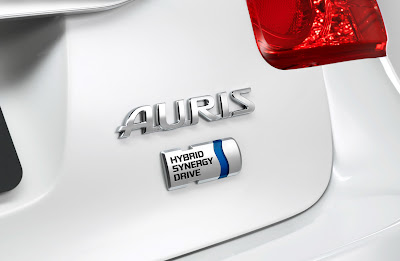 In the UK, the revised Auris in three- and five-door body styles is on sale now with prices ranging from £14,463 to £16,495 - see detailed pricing in the list above.
In the UK, the revised Auris in three- and five-door body styles is on sale now with prices ranging from £14,463 to £16,495 - see detailed pricing in the list above.
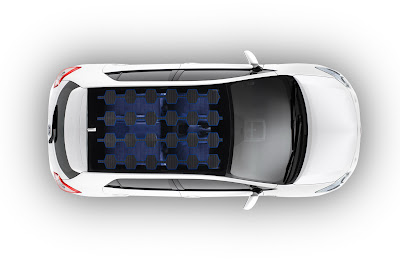
The New Toyota Auris 2010 with Full All The Details
 The new Toyota Auris HYBRID 2010 engine range features a choice of three petrol and three diesel units offering the performance- and economy-enhancing benefits of Toyota Optimal Drive. Complemented by the Auris HSD’s full hybrid technology, this unique line-up will offer customers the most comprehensive range of powertrains in the C segment.
The new Toyota Auris HYBRID 2010 engine range features a choice of three petrol and three diesel units offering the performance- and economy-enhancing benefits of Toyota Optimal Drive. Complemented by the Auris HSD’s full hybrid technology, this unique line-up will offer customers the most comprehensive range of powertrains in the C segment.While Toyota's European press department gave us only a pair of photos and no details whatsoever on the revised 2010 Auris pointing towards the Geneva Show for more information, the Japanese firm's UK arm announced the launch of facelifted model releasing pricing as well specifications.
 Furthermore, Toyota revealed that the sales of the British-built full hybrid Auris HSD that shares its gasoline-electric drivetrain with the Prius Hybrid will commence in July. We expect to see the production version of the Auris HSD making its world premiere at the Geneva Show in March.
Furthermore, Toyota revealed that the sales of the British-built full hybrid Auris HSD that shares its gasoline-electric drivetrain with the Prius Hybrid will commence in July. We expect to see the production version of the Auris HSD making its world premiere at the Geneva Show in March.Toyota wants us to believe that Auris has been fully restyled on the outside, but fact is, we doubt that your average buyer will even notice the changes.

 These include a new deep front bumper, reshaped headlamps, revised grille and bonnet profile with stronger crease lines plus newly styled 16- and 17-inch alloy wheels.
These include a new deep front bumper, reshaped headlamps, revised grille and bonnet profile with stronger crease lines plus newly styled 16- and 17-inch alloy wheels.The revised tail lamp clusters, the new rear bumper with extended corner sections and the integrated turn indicators on the door mirrors complete the exterior makeover.
Inside, Toyota said (but did not show) that a soft-touch material has been introduced across the top of the instrument binnacle and around the glovebox, while the centre console has been revised with changes to the instrument design.
The new white illumination for the Optitron instrument dials and the new cloth upholstery designs round off the interior updates.
Toyota added that the it has also fine-tuned the Auris' suspension and steering systems to improve driver feedback and handling.

 With the exception of the Auris HSD (Hybrid Synergy Drive) that will go on sale in July, the are no changes to the rest of the engine range that comprises a 1.33-litre petrol engine with Toyota Stop & Start technology, a 1.6 Valvematic petrol with manual or MultiMode transmission and 1.4 D-4D diesel, again with manual gearbox or Multimode.
With the exception of the Auris HSD (Hybrid Synergy Drive) that will go on sale in July, the are no changes to the rest of the engine range that comprises a 1.33-litre petrol engine with Toyota Stop & Start technology, a 1.6 Valvematic petrol with manual or MultiMode transmission and 1.4 D-4D diesel, again with manual gearbox or Multimode.
 In the UK, the revised Auris in three- and five-door body styles is on sale now with prices ranging from £14,463 to £16,495 - see detailed pricing in the list above.
In the UK, the revised Auris in three- and five-door body styles is on sale now with prices ranging from £14,463 to £16,495 - see detailed pricing in the list above.




